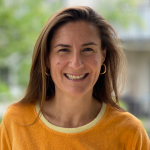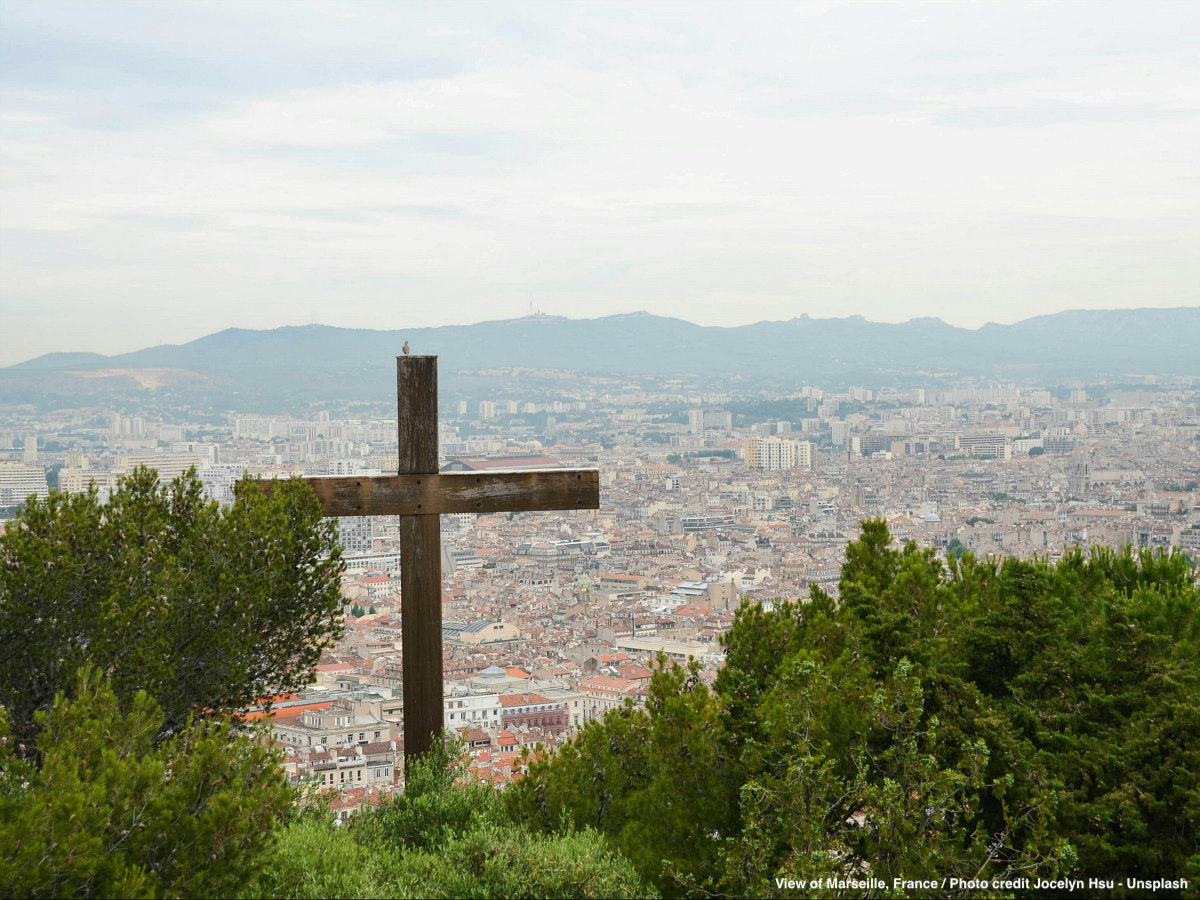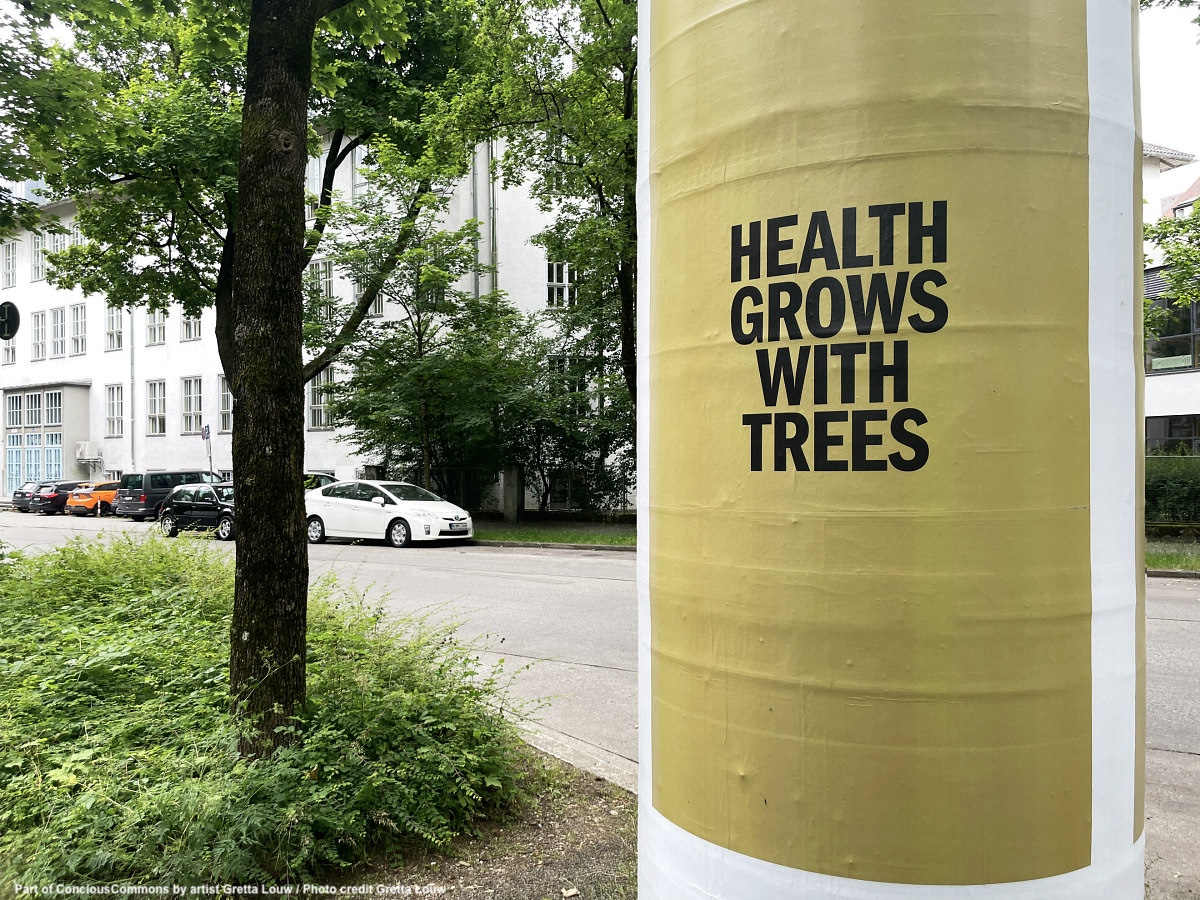On the streets of the Upper East Side of Manhattan, two boys in skates play hockey between two improvised goals, and two girls jump rope, one end tied to a building. Downtown, kids run and roll old tires, another pushes a shopping cart with a friend inside. In Brooklyn, a group of kids play marbles against the curb of the road, and others fish with a self-made cord down a sewer grate. These scenes are all in New York captured on camera during the 1970s and ‘80s.
There is another common element among the pictures which is striking: there is no adult in sight. I remember when I was a child and met up with other kids to jump bollards, feeling like olympic gymnasts. Most of us who grew up before the ‘90s have great memories of outdoor play – in playgrounds, on sidewalks, even in the middle of the street. Kids were resourceful, and incorporated into their play fire hydrants, curbs, iron fences, gutters. Skateboarders emerged at this time too, masterminding the art of urban play.
Unfortunately, these microcosms of urban play and creativity have become extremely rare. Urban planners argue that rapid urbanization and countless changes in the urban environment that prioritize cars have led to less safe conditions and, indirectly, to a drop in outdoor play. Although in truth, improvised urban play has always carried some risk for children, something else did change dramatically over the years – the way we, parents, think of what kids can do. The notion that kids could go somewhere by themselves, and do something that they found interesting or fun, seems to have evaporated. It’s been replaced by the belief that only a parent or another guardian can introduce them to something they’ll likely find interesting and teach them about it. “And that makes the children so passive, because it puts them in the passenger seat of their childhood,” says Lenore Skenazy, New York writer and activist, and president of the nonprofit Let Grow, as we meet over Zoom.
“There’s something macabre, something morbid about the current parenting culture that always makes us think everything ends up with the kidnapping or death of our kids. It’s not innate to think that every time they walk out the door, it could be the end,” says Skenazy who often uses her great sense of humor to speak about the fraught topic of parenting. “The two dangers that are currently stalking American kids are: one, physical safety – kids could be kidnapped or hit by a car – and two, that they won’t get into a good college. So either way, you just have to be helping them all the time.”
Joking aside, Skenazy’s arguments for more childhood independence are based on research evidence to which she adds a great deal of common sense. “I, too, would like fewer cars in New York. But if you’re going to wait till there are no cars, till there’s traffic calming on every street, till there’s a stop sign at every corner, and preferably a crossing guard and a policeman, you’re never going to let kids out. And that’s where we’re at right now,” she laments.
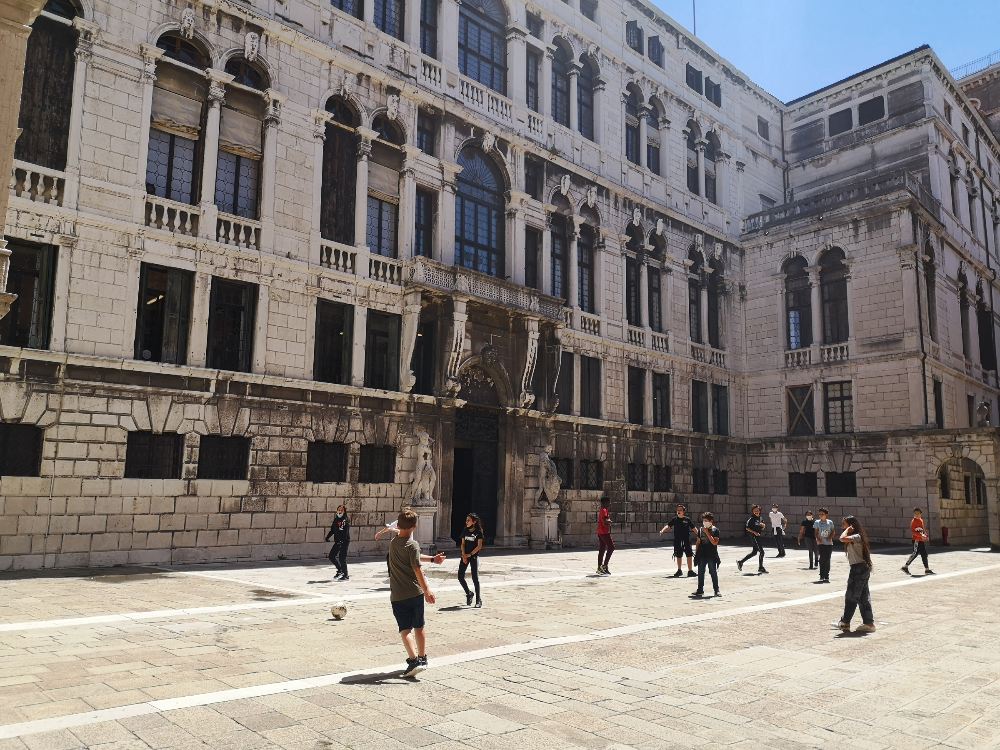
***
Skenazy grew up in a suburb of Chicago, and walked to school from age five. And so did every other kid. When she got to the corner, Skenazy explains, the crossing guard was also a kid. In the morning, the arrival bell rang, and in the afternoon, the dismissal bell, she says, pointing to a shift of language over the years, to today’s “drop off” and “pick up.” As Skenazy puts it, “The kids have become Fed-Ex packages. Autonomy has been written out of the language.”
After school, she remembers that she had a lot of free time “because the intensity of after school activities that nowadays kids do, had not kicked in yet.” Many afternoons she would go over to a friend’s house straight after school or she would come first home and then go out and knock on friends’ doors to see who is free to play.
She says that childhood independence is at its all-time low as compared to previous generations, and this new high surveillance culture undermines free play. Yet it is not nostalgia that drives Skenazy’s criticism of a risk-averse society, but a worrying feeling of the several implications at work. In 2008 she founded the movement called Free-Range Kids to promote raising kids with more freedom that, nine years later, grew into the nonprofit Let Grow, co-founded with businessman Daniel Shuchman, and professors Peter Gray and Jonathan Haidt.
Prof. Peter Gray is a psychology researcher who has spent his life studying the importance of mixed age free play. He is the author of a Psychology textbook used in colleges across America as well as the book Free to Learn. Jonathan Haidt is a social psychologist, a long-time Free-Range Kids fan, co-author of The Coddling of the American Mind, and author of the recent bestseller, The Anxious Generation. It’s not hard to imagine why Haidt and Gray saw in Skenazy’s movement for childhood independence a savvy way to encourage play (away from phones), and in the process improve children’s mental health.
Amid the surge of depression and anxiety for adolescents in the United States, Haidt describes in his last book (in which Skenazy contributed to two chapters) how kids, who in the absence of spontaneous outdoor play, who are glued to their smartphones and use social media, would suffer the side-effects of long screen hours and unprotected social media consumption as they become adults. “We all agree that if you can just get parents to open the door and say to their kids, ‘be home by supper,’ a lot of the problems would ameliorate,” says Skenazy.
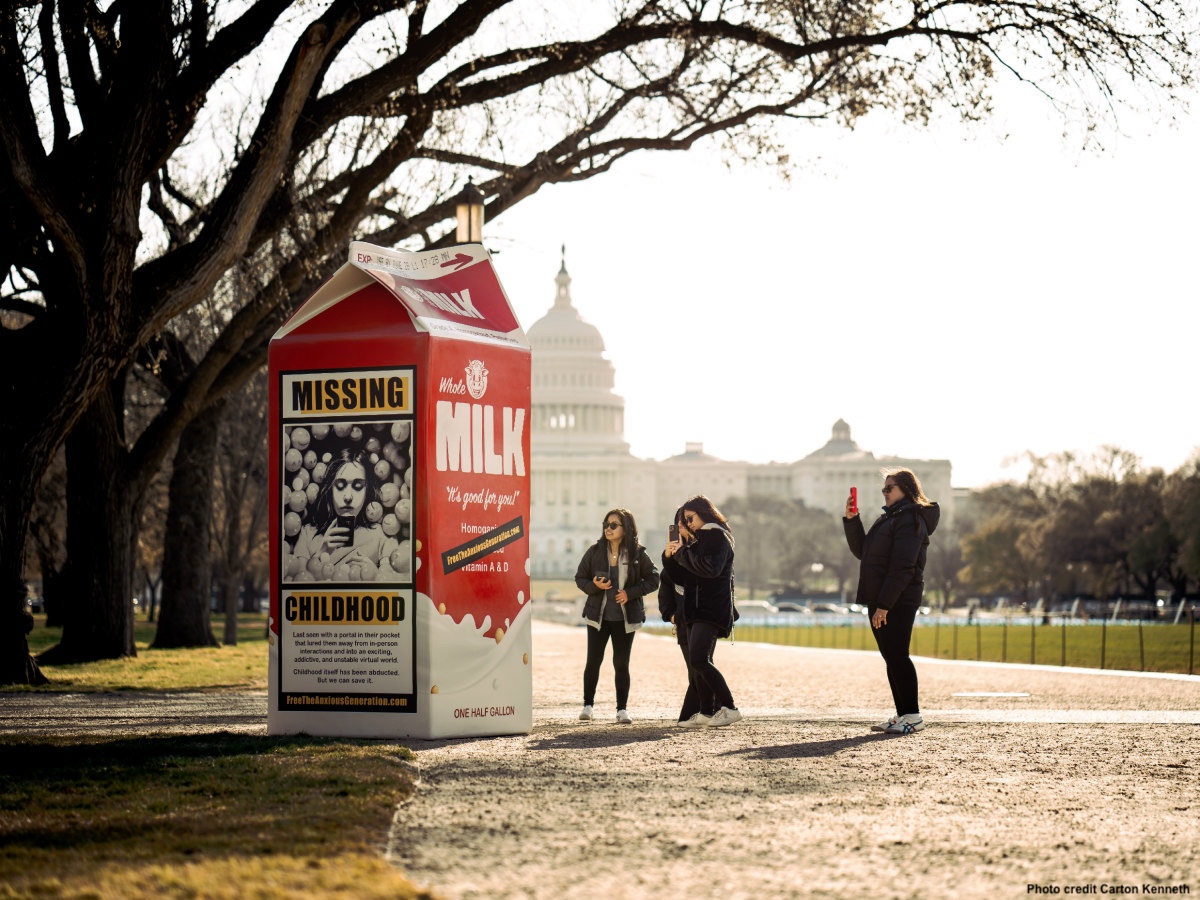
The Let Grow movement is concerned about children, but its audience is adults: let urban kids (and all kids) do more things on their own. Their resilience would help them navigate life later on. But it is extraordinarily unusual to suggest nowadays that kids could be anywhere on their own without a minder. Skenazy smiles and confesses “Somehow, I am the controversial one,” one who defies that assumption, as she remembers her nickname “America’s worst mom” when she let her 9-year-old ride the subway alone in 2008 – and wrote a column about it. In the next two days she was on every possible television show in the US. That experience has been the tenor of everything she has done since, namely trying to find ways to get adults to step back from an entire culture that has decided that all children are in constant danger.
But how did we get so scared for our kids? Skenazy walks me through four reasons that she extensively analyzed in her book Free Range Kids. The first reason is an increasingly fear-mongering media. A lot of things changed in the ‘80s, at least in the US, she says. Skenazy refers to the pictures of missing children on milk cartons, and the arrival of cable television with a 24/7 news cycle. Channels had to fill the day with news, often with stories of childhood tragedies. The rules and broadcast standards also changed, thus the medium got hotter, more ubiquitous, and gorier than ever before. On top of that a growing competition looked for more stories to attract the audience – then the internet took hold, followed by amber alerts, signs on electronic freeway billboards, notifications on our mobile phones, and so on. “The media has become much more saturated with crime, and so much more part of our lives,” concludes Skenazy.
The second reason for being so scared for our kids is that parents started thinking like lawyers. Particularly in the US, citizens live in a very litigious society. “We have a consumer product safety commission, which would be good if they would protect us from, you know, companies selling us cars without brakes. But what they do is recall a product every time there is any tiny defect. Like, 140,000 children’s sweatshirts were recalled because the pull tab on the zipper fell off, and that supposedly posed a choking hazard. Same with any toy that has an eyeball that’s glued to it that could be pulled off – that toy is considered unbearably dangerous, too.”
Then Skenazy points to a shelf in her living room full of parenting books, and says, “and then there is the ‘expert’ culture. It’s like the sorcerer’s apprentice.” And of course, she adds, “there’s the marketplace, and the easiest dollar to get from any human being is the dollar of a parent that you have worried to death about something having to do with their kids and then say, ‘oh, but I have a solution.’ So there are just products out there that make you think that your kid does not come equipped to make it.” This, she says, is reason number four for the culture change.
And finally, there is a fifth reason that Skenazy admits is difficult to quantify. As individuals become wealthier, they tend to believe they are more in control of their fate. For parents, this becomes the belief that, “I can control it all. I can help my kid get into a good school. I can help my kid become a ballerina. I can assure that their future and their present is safe and painless. And it’s all up to me,” she says.
She also briefly alludes to the loss of tradition or religion that has to be filled by something else, “perhaps by the latest study that says, you better do x or y, and that becomes a religion. So you think that you can literally control everything, every aspect of your kid, including who they become.”
This illusion of control holds us parents hostage, and drives us crazy too. “There’s the belief that the minute you stop controlling, the minute you let your nine year old go to the library without you, all bets are off…..So not only are you putting your kid in ‘danger’ but you’re proving your moral lowliness by not walking your kid home from the playdate,” explains Skenazy.
But, of course, if anything bad happens, a risk-averse society would want to shut it down for everyone and forever. And sometimes that means making it into a law. So part of the Let Grow movement is advocacy work to make childhood independence legal again. In 2018, Utah became the first state in the U.S. to pass the Free-Range Parenting bill thanks to Skenazy’s movement, assuring parents that they can give their children some independence without this being mistaken for neglect. So far, Let Grow has helped change the law in 8 states.
***
Let Grow also invests its resources in marketing to American schools and beyond the two free initiatives that they would like to see implemented in all schools. One initiative is what they call Let Grow Play Club, which is a palatable alternative for many parents who’d like their kids to play outside but don’t think it’s safe for them to be at the park unsupervised. So Play Club simply has schools keep a space where kids can play after dismissal. There’s an adult on site, but, like a lifeguard at the beach, they are not organizing games or solving arguments.
“Kids must be exposed to not just the good, but also the bad. Not the terrible – you know, typhoid and warfare – but to some discomfort and frustration,” says Skenazy. And so it is during play that disagreements (perhaps one child doesn’t want to play the proposed game) naturally occur, and “it is why Mother Nature put the play drive into children – so that they would be so desperate to get to the fun part that they would learn how to deal with frustration, how to come up with a compromise, how to create a new idea, how to get an ally. All these things are critical for child development, and they all disappear when an adult intervenes and says, ‘You guys are taking forever to make teams. I’ll do it for you.’”
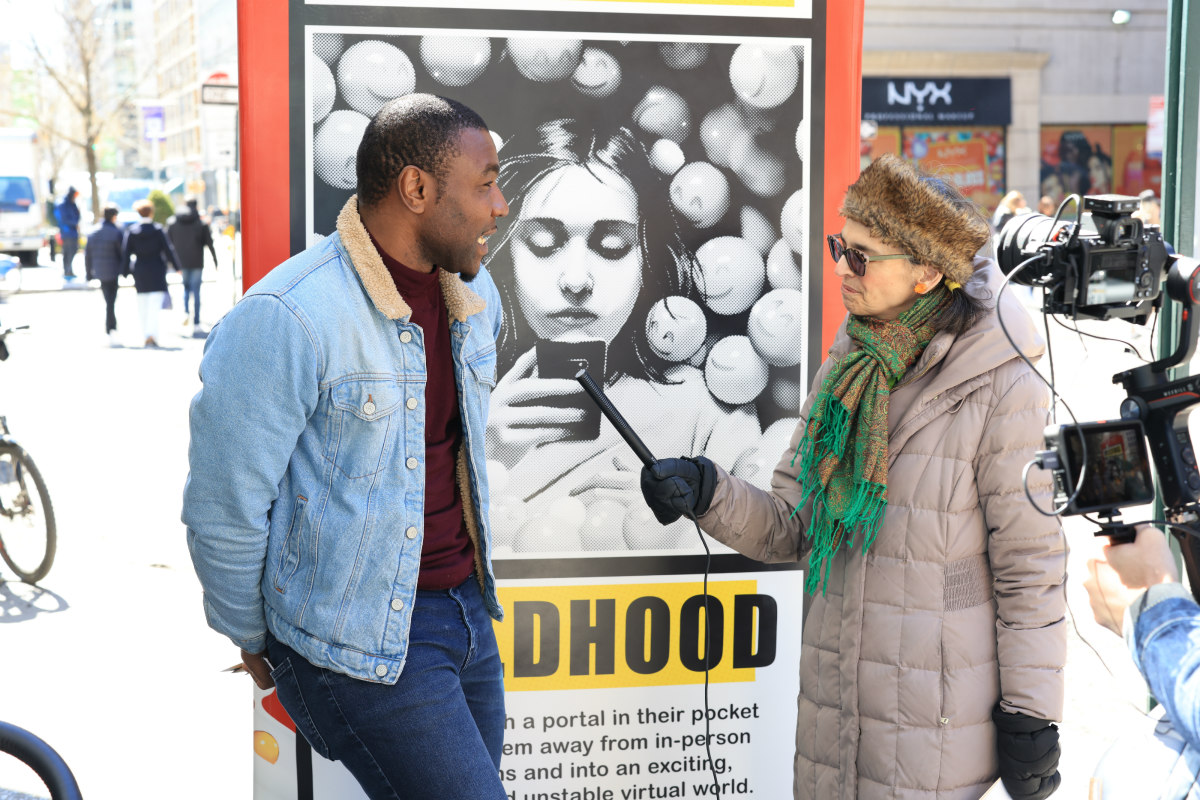
The other initiative is what the organization calls the Let Grow Experience. Teachers basically give all the kids (and parents) a homework assignment: after school, the students must go home and do something new with their parents’ permission, but without their parents watching: walk the dog, climb a tree, run an errand, make pancakes. It doesn’t matter what it is, but the parents must hold themselves back and let the kids do something on their own. The kids feel empowered and confident, and the parents get the experience of putting some distance between themselves and their child to realize just how competent their kid can be.
At the end of our conversation, Skenazy goes into the academic heavy-load of evidence that supports childhood independence. There is a pilot study done by a psychology professor in New York who is using independence as therapy for childhood anxiety. He basically adopted the Let Grow Experience and applied it in a clinical setting to four kids who had a diagnosis of anxiety. Their job was to go and do all sorts of fun new things that they thought they were ready for, and their parents had to let them. “It wasn’t crazy stuff. It was like taking the commuter train and walking home from school, playing chess in the park. They had to do about 20 independent activities over the course of a specific period of time,” reveals Skenazy. “By the end of the month, the kids’ anxiety levels, self described, had gone from feeling worried ‘most of the time’ to feeling worried ‘a little bit of the time.’” This psychology professor, who is also a clinical psychologist, concluded that this method worked faster than cognitive behavioral therapy and more effectively than medication, not to mention that it is more pleasant because the kids were doing things that they wanted to do.
Prof. Peter Gray, one of the Let Grow co-founders, wrote a paper in the September issue of the Journal of Pediatrics about how the decline in children’s independence and free play, and the decline in children’s mental health, have been in parallel for almost 50 years.
In the city of my birth, Oviedo, Spain, I remember looking forward to playing after school –outside, with my friends, or even by myself – every day. And probably most of us over the age of 40 do too. Now it’s our kids’ turn to roam freely, and for our city streets to be filled with the sounds of kids laughing and playing, and sometimes falling down, learning the hard way, again.

